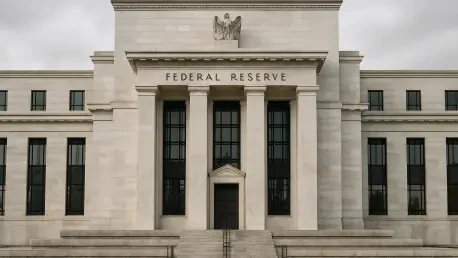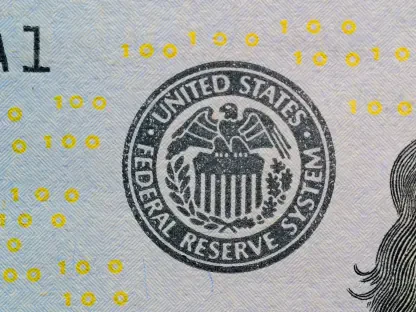In a move that has sent ripples through economic and political circles, President Donald Trump has nominated Stephen Miran, the current Chairman of the Council of Economic Advisers, to fill a vacant seat on the Federal Reserve Board, following the unexpected resignation of Fed Governor Adriana Kugler on August 7. This nomination is far more than a routine appointment; it represents a potential turning point in the long-standing tension between presidential influence and the central bank’s cherished independence. With Miran’s term slated to end on January 31, 2026, the window for impact may be narrow, yet the implications are profound. Trump’s persistent frustration with the Fed’s hesitance to slash interest rates has driven this strategic choice, positioning Miran as a possible ally within an institution that has often resisted political pressure. As debates swirl around the future of monetary policy, this development raises critical questions about whether such a nomination could alter the Fed’s trajectory, even if only temporarily, and what it means for the broader economic landscape.
A Strategic Move for Influence
The nomination of Stephen Miran emerges against a backdrop of Trump’s well-documented dissatisfaction with the Federal Reserve’s monetary policy decisions, particularly its reluctance to lower interest rates to stimulate economic growth. This frustration has been a recurring theme throughout Trump’s tenure, as he views the Fed’s independence as an obstacle to achieving his economic goals. By selecting Miran, who has publicly endorsed the idea of greater presidential oversight of the central bank, Trump appears to be placing a calculated bet. Even though Miran’s term would be brief, lasting less than a year, his presence on the board could provide an internal voice for Trump’s priorities, potentially influencing key discussions on interest rates and other policy matters. This move underscores a broader strategy to challenge the traditional boundaries that have insulated the Fed from direct political interference, setting the stage for a contentious battle over the central bank’s role.
Moreover, this nomination reflects a deliberate attempt to shift the internal dynamics of the Fed at a critical juncture. Analysts suggest that Trump sees Miran as a means to amplify dissent within the board, especially given recent economic indicators that have sparked debates over rate cuts. Unlike other potential nominees who might adhere strictly to the Fed’s conventional stance, Miran’s alignment with Trump’s perspective could embolden existing factions within the board that favor more aggressive monetary easing. This could create a subtle but noticeable shift in how decisions are debated and framed, even if major policy changes remain out of reach in the short term. The significance of this nomination lies not just in immediate outcomes but in the precedent it sets for future appointments, hinting at a longer-term vision to reshape the Fed’s responsiveness to executive priorities amidst ongoing economic uncertainties.
Radical Ideas on Fed Governance
Stephen Miran stands out as a nominee with a distinct and unconventional perspective on how the Federal Reserve should operate, making his potential appointment a focal point of intense scrutiny. In a paper co-authored for the Manhattan Institute, Miran has advocated for sweeping reforms, including shortening the terms of Fed board members to increase accountability, halting the frequent movement of personnel between the executive branch and the Fed, and even proposing the nationalization of the Fed’s 12 regional banks. While these ideas are far from actionable without substantial Congressional backing, they reveal a bold vision for redefining the central bank’s structure. Such proposals resonate with Trump’s desire for tighter control over monetary policy, positioning Miran as a potential catalyst for rethinking the Fed’s autonomy in ways that could have lasting implications if political momentum builds.
Beyond the specifics of his reform agenda, Miran’s nomination highlights a deeper ideological clash over the Fed’s purpose and governance model. His views challenge the long-held belief that the central bank must operate free from political influence to maintain economic stability, instead suggesting that elected officials should have a stronger hand in steering its direction. This perspective, though currently unlikely to translate into immediate policy shifts due to legislative hurdles, sparks vital questions about the balance between independence and oversight. If confirmed, Miran’s presence on the board could serve as a testing ground for these ideas, even if only symbolically, by introducing alternative viewpoints into internal deliberations. The broader discourse around his nomination thus becomes a litmus test for how much appetite exists among policymakers and the public for reimagining the Fed’s role in a politically charged environment.
Navigating Senate Confirmation Challenges
The path to confirming Stephen Miran as a Federal Reserve governor is fraught with political obstacles that could ultimately determine the success of Trump’s gambit. The Senate confirmation process, which includes a detailed hearing before the Senate Banking Committee followed by multiple votes, presents a significant hurdle, especially given the strong opposition from Democratic lawmakers. Prominent figures such as Senator Elizabeth Warren have already signaled their intent to subject Miran to rigorous questioning, citing concerns over executive overreach into the Fed’s domain. With the Senate not scheduled to reconvene until September 2 and a legislative calendar crowded with pressing issues like government funding, the timeframe for securing confirmation is extremely tight. These dynamics underscore the contentious nature of this nomination and the limited window for Miran to make any meaningful impact.
Additionally, the political landscape adds layers of complexity to the confirmation battle, as partisan divisions over the Fed’s independence come into sharp focus. Republicans on the Senate Banking Committee, led by Chairman Tim Scott, may frame the nomination as a push for greater transparency and accountability within the central bank, aligning with Trump’s narrative. Conversely, Democrats are likely to argue that Miran’s appointment risks undermining the Fed’s ability to make impartial decisions based on economic data rather than political agendas. This clash of perspectives could stall the process, especially if other legislative priorities take precedence in the coming months. The outcome of this confirmation struggle will not only determine Miran’s fate but also signal how much political capital Trump can muster to influence the Fed, highlighting the broader tension between executive ambition and legislative oversight in shaping monetary policy.
Economic Pressures and Policy Debates
The timing of Miran’s nomination coincides with a pivotal moment for the Federal Reserve as it grapples with evolving economic challenges that could shape its policy direction. Recent data indicating weaker-than-expected job growth has prompted some Fed policymakers to advocate for interest rate cuts, potentially as early as the September 16-17 meeting, aligning with the kind of monetary easing Trump has long demanded. Miran’s apparent support for dissenting voices within the Fed, such as Governor Christopher Waller, who has favored a more accommodative stance, suggests that his presence could bolster arguments for such shifts. Amidst a softening labor market and persistent inflation concerns, the economic context adds urgency to the debate over whether the Fed should prioritize growth or price stability, making Miran’s potential role a significant variable in these discussions.
Furthermore, the intersection of economic uncertainty and political pressure creates a unique environment for the Fed’s decision-making process, one in which Miran’s nomination could play a subtle yet impactful role. Even if his term is short, his alignment with Trump’s economic priorities might amplify existing divisions among board members, particularly as the central bank weighs the risks of inflation against the need to support employment. This nomination comes at a time when external factors, such as the potential inflationary impact of Trump’s tariff policies, further complicate the Fed’s calculus. Should Miran secure confirmation, his influence could tip the scales in internal debates, even if only marginally, by lending weight to arguments for quicker policy adjustments. This scenario illustrates how a single appointment, though temporary, might resonate through the Fed’s approach to navigating the delicate balance of economic indicators in a politically charged atmosphere.
The Future of Central Bank Autonomy
Stephen Miran’s nomination extends beyond immediate policy implications, igniting a broader conversation about the very nature of the Federal Reserve’s independence in American governance. His proposed reforms, while not immediately feasible without legislative support, reflect a growing sentiment among some political factions that the Fed should be more accountable to elected officials rather than operating as a largely autonomous entity. This perspective clashes with the traditional view that the central bank’s insulation from political whims is essential for maintaining long-term economic stability. As Trump contemplates additional appointments, including a possible successor to Fed Chair Jerome Powell in 2026, Miran’s nomination could serve as a precursor to a more concerted effort to redefine the boundaries of the Fed’s autonomy, testing the resilience of its current framework.
Looking ahead, the symbolic weight of this nomination cannot be understated, as it encapsulates the ongoing struggle between political influence and institutional independence at a time of economic flux. If confirmed, Miran’s tenure, however brief, might embolden future pushes for structural changes within the Fed, especially if Trump secures further leverage through subsequent appointments. The debate surrounding his role highlights a critical juncture for policymakers to reassess how the central bank can balance responsiveness to national priorities with the need for impartial decision-making. As economic challenges like labor market softness and inflationary pressures persist, the resolution of this nomination could set a precedent for how far executive power can extend into monetary policy. Ultimately, the focus now shifts to whether stakeholders can find common ground to preserve the Fed’s credibility while addressing calls for reform in an era of heightened political scrutiny.









